It’s hardly a secret that human recklessness is reaching a critical mass, threatening not only our collective sanity but even our long-term survival. Ever more powerful and impersonal weaponry, endless warfare, super-quick changes in technology, a volatile global economy, the widening gap between the ultrarich and everyone else, climate disasters, species extinction, and ecological devastation: these crises are escalating out of control, and even what was once the most idyllic South Pacific island offers no escape. We’ve got to find ways to put our house in order, and we’ve got to do so fast; otherwise the rapid descent of our civilization towards collapse seems unavoidable.
The critical problems that loom over us—economic, political, and ecological—can be dealt with in either of two ways. One is the symptomatic approach favored by policy wonks and conventional liberal politicians, who view each problem as distinct and propose tackling them through more finely tuned policies. The other approach is holistic. It looks at these problems as interwoven and mutually reinforcing, seeing them as objectifications of our subjective propensities mirroring back to us the distorted ways we relate to ourselves, other people, and the natural world. From this angle, any effective solution requires that we make fundamental changes in ourselves—in our views, attitudes, and intentions. These can then ripple out, coalesce, and inspire transformative action.
I suggest that it is the task of religion—understood broadly as comprising forms of spirituality that don’t necessarily constitute an organized faith—to offer us guidance in making those redemptive changes. In trying to implement them we can expect to meet hardened resistance both from mainstream culture and our own entrenched habits. To understand the necessity of change, we must consider not only our short-term personal advantage but also the long-range impact our choices have on others we will never know or see: on people living in remote lands, on generations as yet unborn, and on the other species that share our planet.
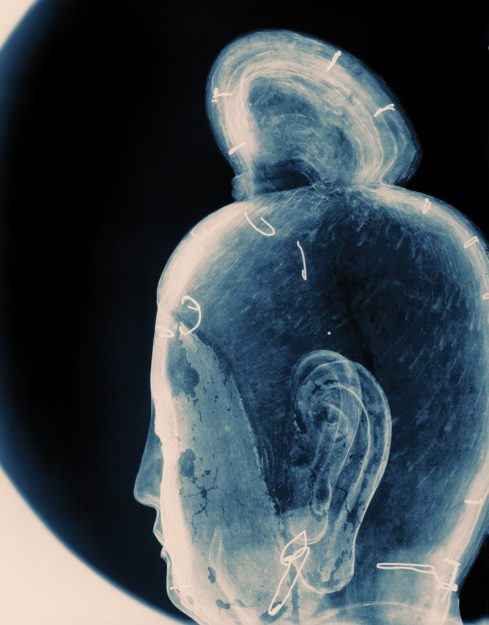
What is required of us is to adopt a panoramic ethical point of view that takes us far beyond the bounds of mere expediency. By connecting us to the deepest sources of ethics, religious consciousness can play a pivotal role in promoting the inner transformations needed to ward off collapse. But for religion to guide us through the approaching storms, the scope of religious consciousness must itself be extended and deepened. We have to draw out from classical spiritual teachings fresh implications and applications seen against the cultural and intellectual horizons of our time.
I have found that by balancing fidelity to tradition with relevance to the present, the classical teachings of Buddhism can be newly formulated to meet the challenges of the historical moment. Classical Buddhism at its core is a path of personal liberation, but its rich array of principles and practices offer powerful tools for accelerating the type of inner growth that can promote outer transformation. Specifically, Buddhism offers us two complementary perspectives that can guide us in our engagement with the world. One pertains to our way of understanding ourselves, the other to our relationship with other living beings. These two perspectives are, respectively, the wisdom of selflessness and universal compassion. Though distinct, the two are closely bound, and in their unity they provide a potent antidote to our current perilous drift.
The wisdom of selflessness, according to the Buddha’s teaching, is the necessary remedy for the false sense of personal identity that normally hovers in the background of our minds. This misplaced sense of personal identity has harmful ramifications on at least three fronts: in relation to material things, in relation to ourselves, and in relation to other people. In relation to things, it gives rise to inordinate greed and acquisitiveness. In relation to ourselves, it leads to attempts to enhance our self-image by acquiring wealth and status. In relation to other people, it engenders envy, competitiveness, and lust for power.
Related: Meditation In Action: The Emergence of Engaged Buddhism
The Buddha says that these compulsions, the causes of our suffering, originate because we implicitly take ourselves to possess a truly existent self. The wisdom of selflessness is designed to dispel the delusion of self and thereby free us from suffering. To develop this wisdom, we closely examine the factors around which the idea of self congeals, the “five aggregates” of bodily form, feeling, perception, volitional activities, and consciousness. By mindfully attending to them, we see that all the aggregates—the factors of our being—are impermanent, composite, and ever changing. Each lacks the persistency essential to selfhood and thus turns out to be selfless. Insight into the selfless nature of the five aggregates breaks the bondage of craving, enabling us to realize transcendent liberation, nirvana.
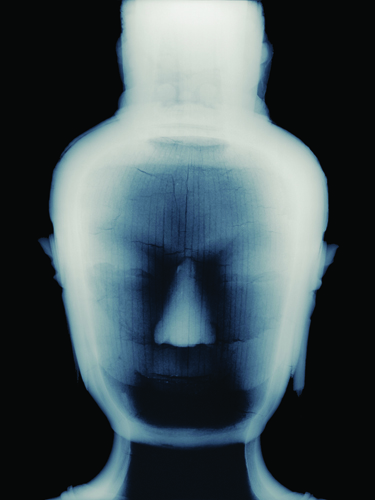
While classical Buddhism proposes insight into the selfless nature of personal identity as the key to liberation, this same insight can be given an extended application to purge us of the greed, lust for domination, and complacency responsible for our current predicament. To extend the wisdom of selflessness, we shift its focus from an analysis of the composite nature of personal identity to an exploration of the wide web of conditionality. If things lack substantial existence because they are impermanent and composite, they also lack substantial existence because they arise and persist in dependence on an intricate network of conditions. Insight into the interdependency of phenomena reveals that the very being of things is a system of relations. Things exist not as self-sufficient entities but as temporary nodules in a fluid current of energies.
Reflection on conditionality begins with oneself. We consider how our own body is constituted of the food we eat, which depends on soil, water, and sunshine; on the labor of those who grow the food and the transport that brings it to market. Our body depends on air, water, and heat. We wear clothes made from cotton and wool and synthetics. The cotton depends on cotton fields, and on those who work the fields, and those who weave it into threads and turn the threads into fabric and the fabric into clothes. Our own bodies are the end product of an evolutionary chain that goes back to the Big Bang, to the stars, galaxies, and stardust. This body encapsulates every stage in the long march of evolution, from the first cells that appeared billions of years ago in the ancient oceans. Every organ, tissue, and cell records in its DNA the entire history of life. Our culture is the end product of human civilization, from the first groups of hunter-gatherers to the first settled agrarian communities to the mighty empires of the ancient world, all the way up through the science, art, and technology of the 21st century. All the inhabitants of this planet are intertwined, from corporate CEOs in the skyscrapers of Manhattan to factory workers in China to farmers in Iowa to meatpackers in Wisconsin to the techno-wizards of Bangalore to the armed kids in the Congo to the indigenous peoples of Brazil and Borneo.
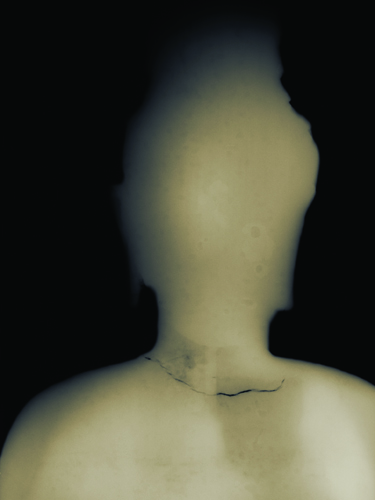
From the human realm we can move outward in widening circles until our insight encompasses all forms of sentient and nonsentient life. Seeing how all living beings are bound together in the most intricate symbiotic relationships, we respect all forms of life. Seeing how all living beings are engaged in a continuous exchange of materials with their surroundings, we regard the environment as sacrosanct—precious for its instrumental value, as the sphere in which life unfolds, and precious for its intrinsic value, as a domain of mysterious intelligence, beauty, and wonder.
Related: Agent of Change: An Interview with bell hooks
This is not abstract theory but the groundwork for a transformative discipline. To see into the interconnectedness of all living things is to see how all living things are part of a unified field that contains all, and at the same time to see that this entire field is embodied by each being, constituted of its cells, organs, nervous system, and consciousness. Correct cognition entails appropriate action. It issues in an ethic that bids us consider the long-term effects our deeds exert on other people, on all beings endowed with sentience, and on the entire biosphere.
In minimal terms, this means that we cannot tolerate behavior that endangers vast sections of the world’s population. We cannot use the earth’s resources in ways that result in the mass extinction of species, with unpredictable results. We cannot spend billions on the fratricidal activity of war, while a billion people suffer from hunger, sleep on the streets, and die from easily curable illnesses. We cannot burn fuels that irreversibly alter the climate, or discharge toxic substances into our water and air, without initiating chain reactions that will eventually poison ourselves.
For the spiritual life to unleash its full potential as a fountainhead of grace and blessings, the wisdom of selflessness on its own is not sufficient. Wisdom has to be joined with another force that can galvanize the will to act. The force needed to empower wisdom is compassion. Both wisdom and compassion shift our sense of identity away from ourselves toward the wider human, biotic, and cosmic community to which we belong. But where wisdom involves a cognitive grasp of this fact, compassion operates viscerally.
The systematic development of compassion begins with the cultivation of lovingkindness. Lovingkindness is said to be the basis for compassion because, in order to sympathize with those in pain, we first must empathize with them and desire their welfare. The feeling of love for beings—ourselves included—makes us care about their happiness and well-being. Then, when they meet suffering, our hearts are stirred and we reach out to help them.
Compassion evolves from lovingkindness by narrowing the focus from beings in a generic sense to those afflicted by suffering. To develop compassion systematically, one brings to mind people in pain and distress, generating the wish “May they be free from suffering.” Perhaps the most suitable type of people with which to begin the practice are children. They should be real people, not imaginary, and one should choose specific individuals. If you don’t personally know such children, choose a few you may have read about in the news: the girl in Sri Lanka who lost her parents in the 2004 tsunami; the boy in the Congo forced to fight in armed conflict; the young woman in Cambodia sold into the sex trade; the neighbor’s son who is beset by an incurable illness. Feel each child as your own, and inwardly share their plight.
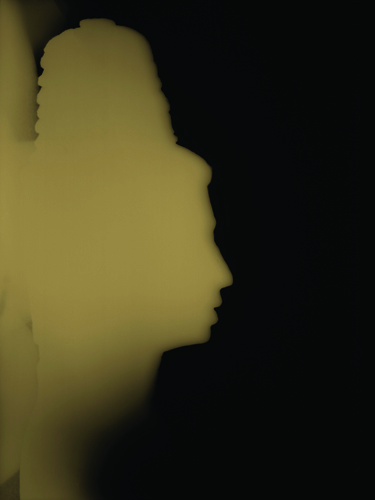
To expand the feeling of compassion, we next bring to mind a few mature people undergoing different forms of suffering. Again, these can be people one knows personally or has read about in the news. But we should avoid individuals whose misfortune will arouse indignation and those whose suffering is likely to cause worry and dejection. Having selected four or five people, we identify deeply with each, sincerely wishing that they be free from suffering. We repeat this process again and again, taking each person in turn, until compassion spontaneously swells up in our hearts. Then, in graded steps, we extend compassion over the whole earth and finally to afflicted beings in all realms of existence.
Traditional Buddhism describes boundless love and compassion as liberations of the heart (Pali, cetovimutti) that free us from ill will, cruelty, and indifference. They are called divine dwellings (brahmaviharas) because those who practice them radiate holy wishes for the welfare, happiness, and security of all beings. Given, however, the gravity of the crisis that confronts us today, it is questionable whether the merely inward cultivation of such virtues is sufficient. If love and compassion don’t find expression in concrete action, they could remain purely subjective states, lofty and sublime but inert, unable to exert any beneficial influence on others. While able to lift us to the heights, they might bind us there, limiting our ability to descend and pour out their blessing power into the troubled, anxious world in which we live. In my understanding, the crisis of our age requires that wisdom and compassion jointly acquire an immanent, transformative function that can give a new direction to our collective life. The key to this transformation is what I call “conscientious compassion.” This is a compassion that does not confine itself to passively wishing good for others but courageously takes the steps necessary to help them: to remove their suffering and bring them real happiness. This is a compassion informed by the voice of conscience, which continually reminds us that too many of our fellow beings, human and animal alike, are unjustly condemned to lives of misery. Conscientious compassion boldly enters the fray of action, not afraid to engage with politics, economics, and programs of social uplift. It tells us that we need to treat people as ends rather than as means, ensuring that they are protected against exploitation and injustice. It is at once a compassion that acts and a sense of conscience that remains ever open to the pain of the world.
The spur to conscientious compassion is a keen recognition of our own responsibility for transfiguring life on earth. When we feel, deep inside, that others are not essentially different from us, our lives will undergo a sea change. Convinced that we can make a difference, we will actually exert ourselves to make that difference. We will then live, not for our narrow ends rooted in egocentric grasping, but for the welfare and happiness of the whole. While pursuing the transcendent good, we won’t neglect the ethical and cosmic good. Inspired by a wide and profound vision of our ultimate potential, we will work unflinchingly within this conditioned realm to build a global community committed to social justice, pledged to peace, and respectful of other forms of sentient life.
Related: Climate Change Is a Moral Issue
To shift gears from contemplative compassion to conscientious compassion, we have to find a personal calling, a task that enables us to change the world for the better. Each of us has some task, some way to practice conscientious compassion. The question is: How do we find that task? To find it, a specific method can be prescribed (for which I am indebted to my friend Andrew Harvey). At the outset, practice the usual meditation on compassion, perhaps for 20 or 30 minutes. Then focus your attention on several of the formidable problems that loom before humanity today: futile and self-destructive wars, rampant military spending, global warming, violations of human rights, poverty and global hunger, the exploitation of women, our treatment of animals, the abuse of the environment, or any other concern that comes to mind. Reflect briefly on these problems, one by one, aware of how you respond to them. You can repeat this procedure for several days, even daily for a week. At some point, you will start to recognize that one of these problems, more than the others, tugs at the strings of your heart. These inner pangs suggest that this is the particular issue to which you should dedicate your time and energy.
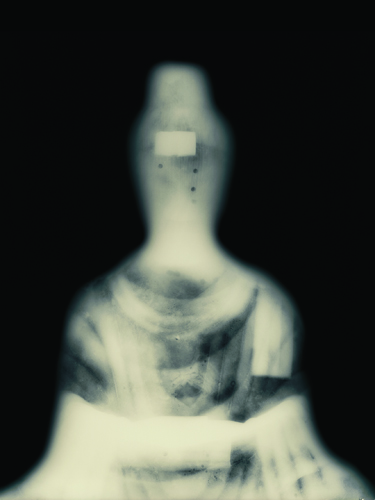
But don’t be hasty in drawing this conclusion. Rather, continue to explore the issue cautiously and carefully, asking yourself: “Does this issue break my heart open and cause a downpour of compassion? Does this urge gnaw at my vital organs? Does it point the finger to the door and tell me to do something?” If your answer to these questions is “Yes,” that is your vocation, that is your sacred calling, that’s where you should put conscientious compassion into action. This doesn’t mean you neglect other issues. You remain open and responsive to other concerns, but you focus on the issue that tugs at your heart and bids you to act.
This enlargement of mission, I believe, may well mark the next decisive step in the evolution of Buddhism and of human spirituality in its wider dimensions. I see this as a shared endeavor that transcends specific faiths and provides a broad canopy under which different religions and spiritual movements (including secular humanism) can gather in harmony. In my thinking, for human spirituality to evolve to the next level it must resolve the sharp dualisms that prevail in older spiritual traditions: between worldly life and world-transcendence, outer activity and inner peace, cosmos and eternity, creation and God. Instead of devaluing one in favor of the other, the progression to a more complete stage of spirituality—one corresponding to our present understanding of life and the universe—calls for integration rather than separation. Our need is to embody the realization of enlightened truth securely within the horizons of humanity’s historical and cosmic adventure. Our mission is to enact enlightened truth in a way that contributes to the human and universal good.
Does this issue break my heart open and cause a downpour of compassion? Does this urge gnaw at my vital organs? Does it point the finger to the door and tell me to do something? If your answer to these questions is “Yes,” that is your vocation, that is your sacred calling, that’s where you should put conscientious compassion into action.
In making such a statement, I am aware that I am going beyond the boundary posts of traditional Buddhist doctrine, whether Theravada or Mahayana. However, I believe that any religion, including Buddhism, best preserves its vitality through an organic process of growth, and I don’t see such growth as necessarily entailing a fall from a primal state of perfection. While remaining faithful to its seminal intuitions, a spiritual tradition can absorb, digest, and assimilate new insights supplied by its intellectual and cultural milieu and by the advancing edge of knowledge. These influences can draw forth potentials implicit in the older teaching that could not emerge until the appropriate cultural transformations evoked them and allowed them to flower.
In a world torn by violence, oppressed too long by projects aimed at domination, I believe that a conscientious compassion guided by wisdom is the most urgent need of the hour. In adopting this integral approach to spirituality, however, I see our task as involving more than merely avoiding environmental devastation, providing others with enough food to eat, and paving the way to respect for human rights. In my understanding, our larger task is to give birth to a new vision and scale of values that replaces division with integration, exploitation with cooperation, and domination with mutually respectful partnership. The overcoming of clinging through the wisdom of selflessness, the development of empathic love, and the expression of both in conscientious compassion have today become imperatives. They are no longer mere spiritual options, but necessary measures for safeguarding the world and for allowing humankind’s finest potentials to flourish.